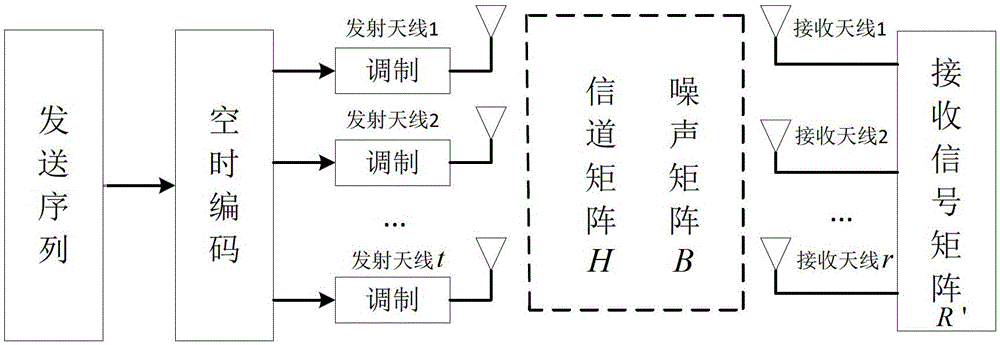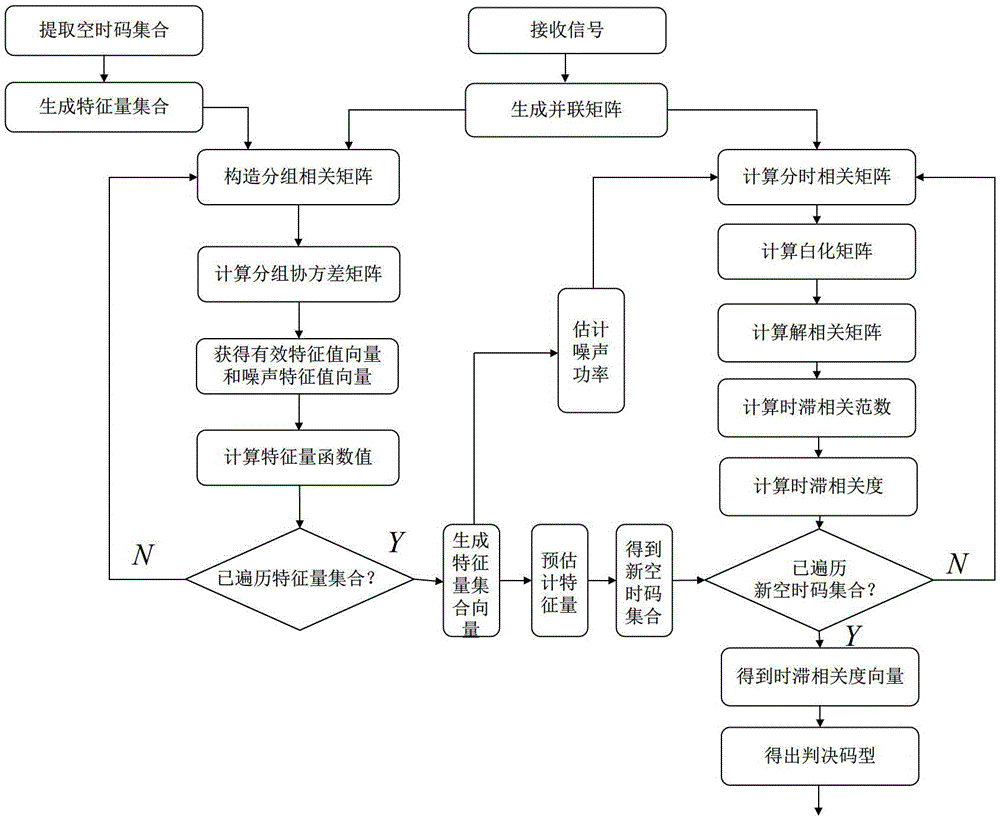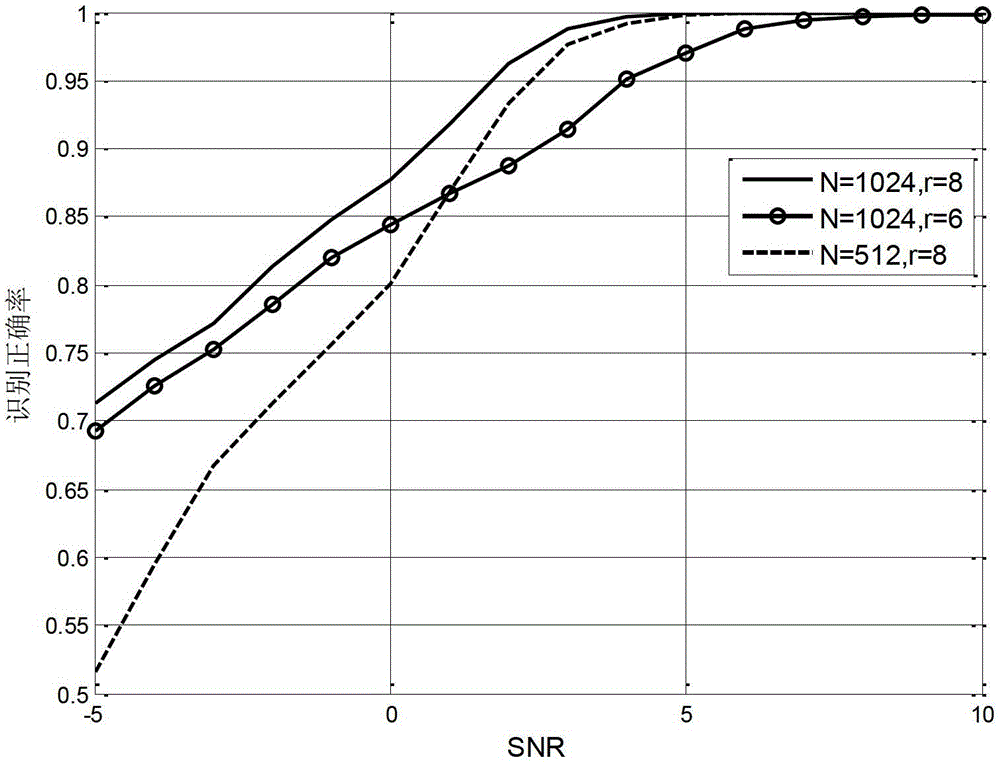Blind Recognition Method of Delay Correlated Space-Time Code Patterns Based on Pre-estimation of Feature Quantities
A feature quantity and space-time code technology, applied to baseband system components, preventing/detecting errors through diversity reception, etc., can solve problems such as increased computational complexity, unrecognizable coding modes, and unrecognizable BLAST coding modes
- Summary
- Abstract
- Description
- Claims
- Application Information
AI Technical Summary
Problems solved by technology
Method used
Image
Examples
Embodiment Construction
[0054] refer to figure 1 , the system on which the present invention depends includes: 4 transmitting antennas, 8 or 6 receiving antennas, and the modulation mode is 4QAM. At the transmitter, the serial transmission sequence is converted into a parallel transmission sequence after space-time coding, and then the parallel sequence is modulated and sent out. At the receiving end, the received signal matrix is R': R'=HX+B, where R' is the received signal matrix, H is a channel matrix that obeys the complex Gaussian distribution with independent elements, X is the transmitted information sequence, and B is Gaussian White noise matrix.
[0055] The present invention blindly recognizes the space-time code pattern used by the sending end according to the received signal matrix R'.
[0056] refer to figure 2 , the concrete realization of the present invention is as follows:
[0057] Step 1, get the received signal matrix R':
[0058] The receiving end receives the signal seque...
PUM
 Login to View More
Login to View More Abstract
Description
Claims
Application Information
 Login to View More
Login to View More - R&D
- Intellectual Property
- Life Sciences
- Materials
- Tech Scout
- Unparalleled Data Quality
- Higher Quality Content
- 60% Fewer Hallucinations
Browse by: Latest US Patents, China's latest patents, Technical Efficacy Thesaurus, Application Domain, Technology Topic, Popular Technical Reports.
© 2025 PatSnap. All rights reserved.Legal|Privacy policy|Modern Slavery Act Transparency Statement|Sitemap|About US| Contact US: help@patsnap.com



